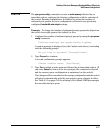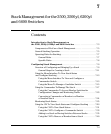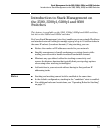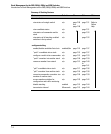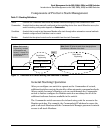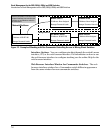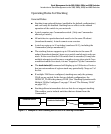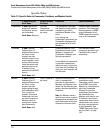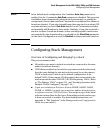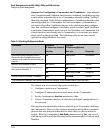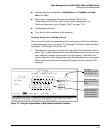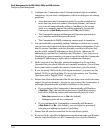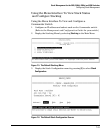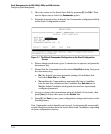
Stack Management for the 3500, 3500yl, 6200yl and 6600 Switches
Introduction to Stack Management on the 3500, 3500yl, 6200yl and 6600 Switches
Operating Rules for Stacking
General Rules
■ Stacking is an optional feature (enabled in the default configuration)
and can easily be disabled. Stacking has no effect on the normal
operation of the switch in your network.
■ A stack requires one Commander switch. (Only one Commander
allowed per stack.)
■ All switches in a particular stack must be in the same IP subnet
(broadcast domain). A stack cannot cross a router.
■ A stack accepts up to 16 switches (numbered 0-15), including the
Commander (always numbered 0).
■ The stacking feature supports up to 100 switches in the same IP
subnet (broadcast domain), however, a switch can belong to only one
stack. In the event that the 100 switch limit is exceeded, it may take
multiple attempts to add or move a member to any given stack. Once
a member is added to a stack, it is not “forgotten” by the Commander.
■ The stack status (all) command will display up to 100 devices. Devices
that are not members of a given stack may periodically “drop out” of
the list.
■ If multiple VLANs are configured, stacking uses only the primary
VLAN on any switch. In the factory-default configuration, the
DEFAULT_VLAN is the primary VLAN. (See “Stacking Operation with
Multiple VLANs Configured” on page 7-44 and “The Primary VLAN”
on page 2-51.)
■ Stacking allows intermediate devices that do not support stacking.
This enables you to include switches that are distant from the
Commander.
Commander Switch
Switch with Stacking
Disabled or Not Available
Member Switch
Candidate Switch
Figure 7-3. Example of a Non-Stacking Device Used in a Stacking Environment
7-7



